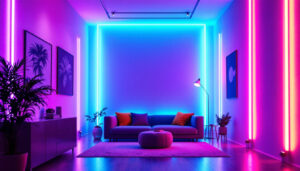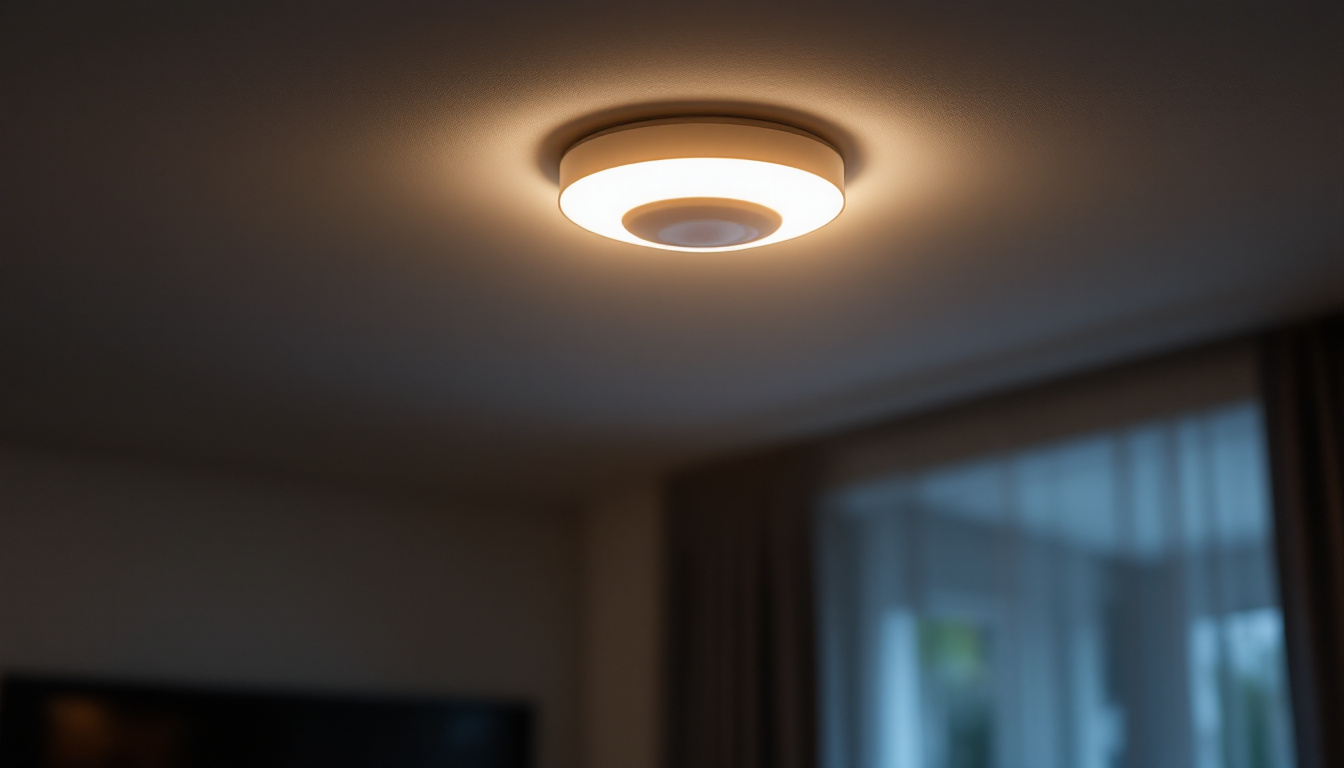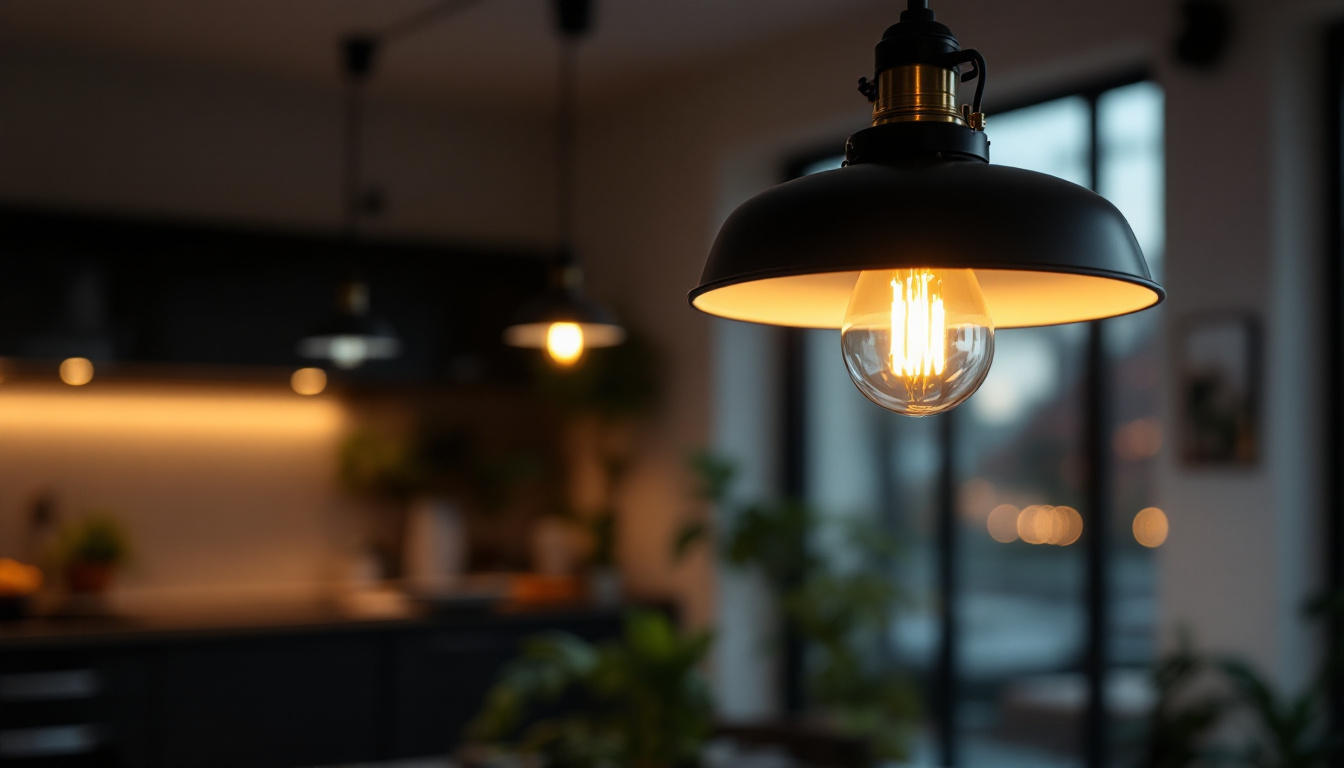

In the ever-evolving world of lighting technology, motion sensor ceiling lights have emerged as a game-changer for contractors. These innovative fixtures not only enhance energy efficiency but also offer significant cost savings for both contractors and their clients. As the demand for sustainable solutions increases, understanding the benefits of motion sensor ceiling lights becomes essential for lighting contractors aiming to stay ahead in the industry.
Motion sensor ceiling lights are designed to automatically turn on or off based on the presence of individuals in a room. These fixtures utilize advanced technology to detect movement, ensuring that lights are only activated when needed. This not only conserves energy but also extends the lifespan of the lighting fixtures, making them an attractive option for both residential and commercial applications. In addition to their energy efficiency, these lights can also enhance the overall ambiance of a space, providing a seamless transition from darkness to light as one enters a room.
There are several types of motion sensors used in ceiling lights, each with its unique features and applications. The most common types include passive infrared (PIR), ultrasonic, and dual technology sensors. PIR sensors detect heat emitted by objects, while ultrasonic sensors use sound waves to identify movement. Dual technology sensors combine both methods for enhanced accuracy. Understanding the differences between these sensor types can help contractors select the most suitable option for their projects. For instance, PIR sensors are ideal for spaces with predictable traffic patterns, whereas ultrasonic sensors may be more effective in larger or irregularly shaped areas. Additionally, some modern sensors are equipped with adjustable sensitivity settings, allowing users to customize their performance based on specific needs, such as avoiding false triggers from pets or small objects.
The advantages of installing motion sensor ceiling lights extend beyond simple convenience. One of the most significant benefits is energy savings. By ensuring that lights are only on when needed, contractors can help clients reduce their energy bills significantly. This is particularly beneficial in commercial settings where lighting can account for a substantial portion of operational costs. Furthermore, many motion sensor lights now come with smart technology integration, allowing users to control their lighting remotely via smartphone apps, which adds another layer of convenience and customization.
Moreover, motion sensor lights contribute to enhanced safety and security. In areas such as hallways, staircases, and parking lots, these lights provide illumination only when someone is present, reducing the risk of accidents and deterring potential intruders. This added layer of security can be a selling point for contractors when discussing options with clients. Additionally, the presence of motion sensor lights can also improve the overall user experience in spaces like offices and homes, as they eliminate the need to fumble for switches in the dark, thereby promoting a more user-friendly environment. The integration of motion sensors into lighting design not only meets practical needs but also aligns with modern trends towards smart home technology, making them a forward-thinking choice for any project.
For lighting contractors, the integration of motion sensor ceiling lights can lead to substantial cost reductions in various ways. By understanding these strategies, contractors can maximize their profitability while providing valuable solutions to clients.
One of the most direct ways motion sensor ceiling lights can reduce costs is through decreased energy consumption. Traditional lighting systems often remain on for extended periods, leading to unnecessary energy waste. In contrast, motion sensors ensure that lights are activated only when required, significantly lowering electricity bills.
Contractors can present energy savings as a key selling point to clients, illustrating how these systems can lead to a return on investment over time. By providing detailed estimates of potential savings, contractors can enhance their credibility and attract more business.
Another cost-saving aspect of motion sensor ceiling lights is their potential for lower maintenance costs. Traditional lighting fixtures often require frequent bulb replacements and repairs due to continuous use. However, motion sensor lights, by design, reduce the amount of time they are operational, leading to a longer lifespan for bulbs and fixtures.
Contractors can leverage this benefit when negotiating contracts, emphasizing the reduced maintenance needs and associated costs. This can be particularly appealing to clients who are looking for long-term solutions that require minimal upkeep.
Installing motion sensor ceiling lights can also lead to a more efficient installation process. Many of these fixtures are designed for easy installation, which can save contractors time and labor costs. The ability to quickly install these systems means that contractors can take on more projects, ultimately increasing their revenue potential.
Additionally, many manufacturers offer comprehensive support and training for contractors, ensuring that they can confidently install and troubleshoot these systems. This reduces the likelihood of costly mistakes during installation and enhances the contractor’s reputation for quality work.
While the benefits of motion sensor ceiling lights are significant, there are also challenges and considerations that lighting contractors should keep in mind. Understanding these factors can help contractors navigate potential obstacles and provide the best solutions for their clients.
One of the primary challenges with motion sensor lights is ensuring proper placement and coverage. If sensors are not positioned correctly, they may fail to detect movement effectively, leading to frustration for users. Contractors must take the time to assess the layout of the space and determine the optimal locations for sensors to maximize their effectiveness.
Additionally, it is essential to consider the types of activities that will take place in the area. For example, in a room with frequent movement, a sensor with a wider coverage area may be necessary, while a smaller space may require a more focused approach. Proper planning and consultation with clients can mitigate these challenges.
Some clients may be hesitant to embrace new technology, particularly if they are accustomed to traditional lighting systems. Contractors should be prepared to educate clients on the benefits of motion sensor ceiling lights, addressing any concerns they may have regarding functionality and reliability.
Providing demonstrations or case studies of successful installations can help alleviate fears and build trust. By showcasing the advantages and long-term savings associated with these systems, contractors can encourage clients to make informed decisions.
While motion sensor ceiling lights can lead to significant savings over time, the initial investment may be higher than traditional lighting options. Contractors should be transparent about these costs and emphasize the long-term benefits to justify the investment.
Offering financing options or incentives can also help clients feel more comfortable with the initial expenditure. By presenting a clear cost-benefit analysis, contractors can facilitate a smoother decision-making process for clients.
The lighting industry is constantly evolving, and motion sensor technology is no exception. As advancements continue, contractors must stay informed about emerging trends that could impact their business and the solutions they offer.
One of the most exciting trends in motion sensor lighting is the integration with smart home systems. As more homeowners adopt smart technology, the demand for lighting solutions that can be controlled remotely is increasing. Motion sensor ceiling lights that can be integrated with smart home platforms allow users to customize their lighting experience, enhancing convenience and energy efficiency.
Contractors who are knowledgeable about smart home integration can position themselves as experts in the field, attracting tech-savvy clients looking for modern solutions. This expertise can lead to increased business opportunities and a competitive edge in the market.
As technology continues to advance, motion sensors are becoming more sophisticated. Newer models may feature improved sensitivity, longer detection ranges, and the ability to differentiate between human and pet movement. These advancements can enhance the functionality of motion sensor ceiling lights, making them even more appealing to contractors and clients alike.
Staying updated on these technological advancements allows contractors to offer the latest solutions to their clients, ensuring they remain competitive in a rapidly changing industry.
With an increasing emphasis on sustainability, the demand for energy-efficient lighting solutions is expected to grow. Motion sensor ceiling lights align perfectly with this trend, as they contribute to reduced energy consumption and lower carbon footprints. Contractors who prioritize sustainability in their offerings can attract environmentally conscious clients and enhance their reputation in the industry.
By promoting the eco-friendly benefits of motion sensor lighting, contractors can position themselves as leaders in sustainable solutions, appealing to a broad range of clients.
Motion sensor ceiling lights present a wealth of opportunities for lighting contractors looking to reduce costs and enhance their service offerings. By understanding the technology, benefits, and challenges associated with these fixtures, contractors can provide valuable solutions that meet the needs of their clients. As the industry continues to evolve, staying informed about trends and advancements will be essential for maintaining a competitive edge.
Ultimately, the integration of motion sensor ceiling lights not only leads to cost savings but also enhances safety, convenience, and sustainability. By embracing this technology, lighting contractors can position themselves as forward-thinking professionals in an industry that is rapidly changing.
Ready to elevate your lighting solutions and pass on the savings to your clients? LumenWholesale is here to support your goals with our premium selection of motion sensor ceiling lights. As a dedicated partner to lighting contractors, we offer spec-grade products that embody the perfect fusion of quality, affordability, and convenience. Say goodbye to inflated markups and hello to unbeatable wholesale prices, complemented by the ease of free shipping on bulk orders. Don’t let hidden fees dim your project’s potential. Choose LumenWholesale for Wholesale Lighting at the Best Value and light up your business with success.

Discover essential insights into commercial sign lighting with our comprehensive guide tailored for lighting contractors.

Discover the transformative power of black industrial pendant lights in energy-efficient lighting.

Discover essential insights into flood lights with our comprehensive guide tailored for lighting contractors.

Discover the pivotal role commercial lighting distributors play in successful lighting installations.
Get notified when NEW deals are released.
Optimize your budget with wholesale discounts.
Only top-quality, specification-grade lighting products.
No additional costs at checkout - what you see is what you pay.
We understand the unique needs of contractors.